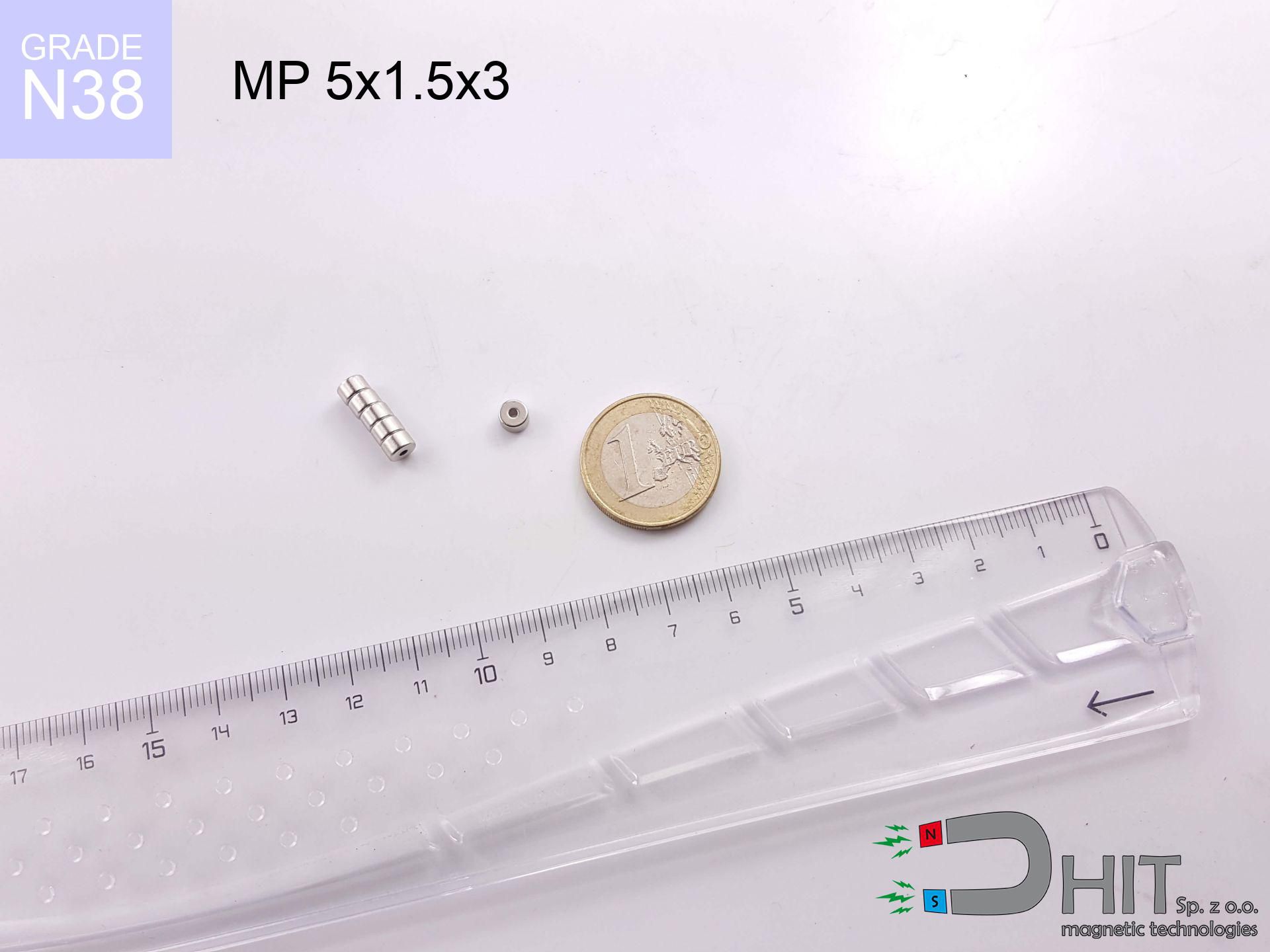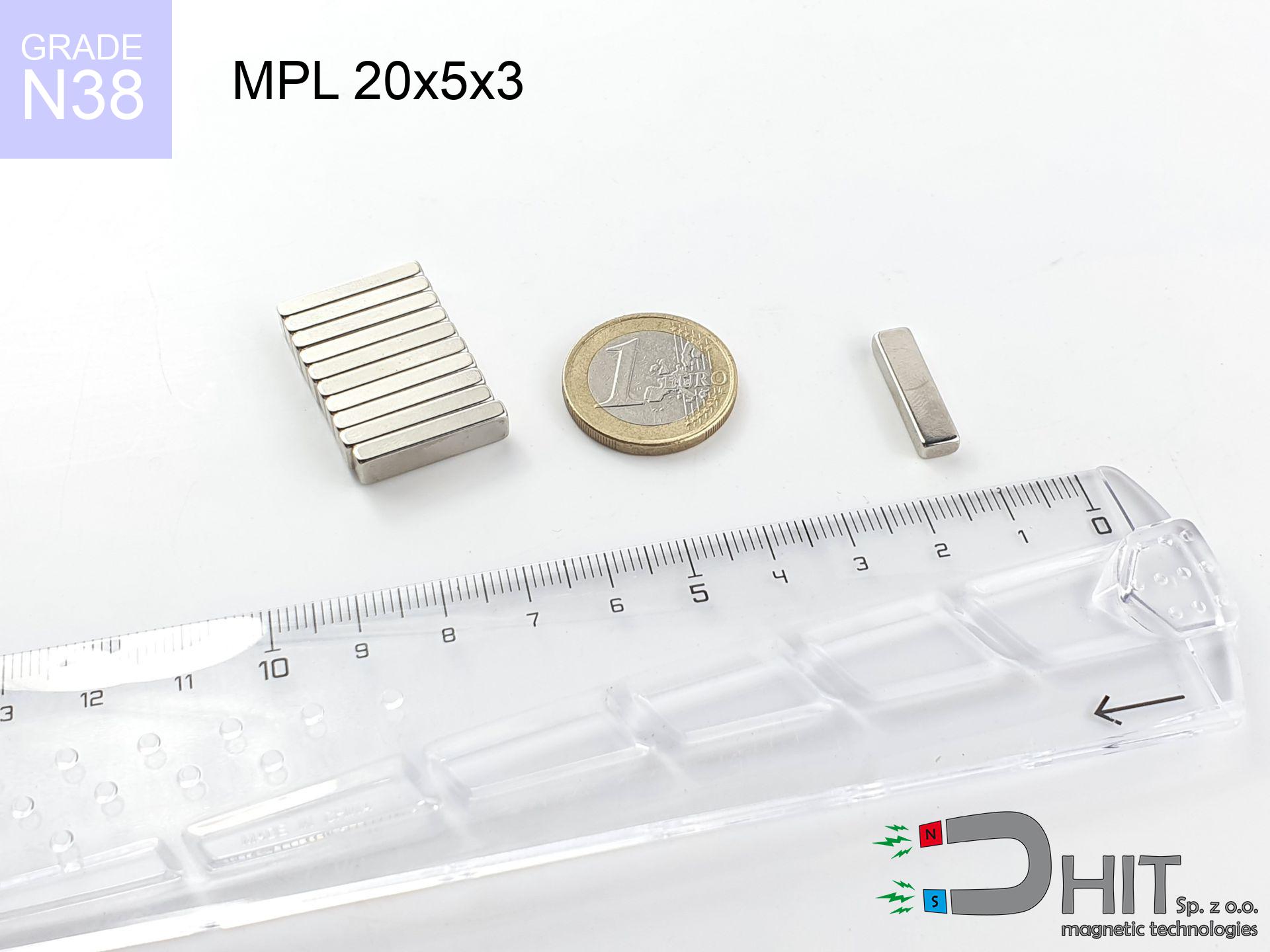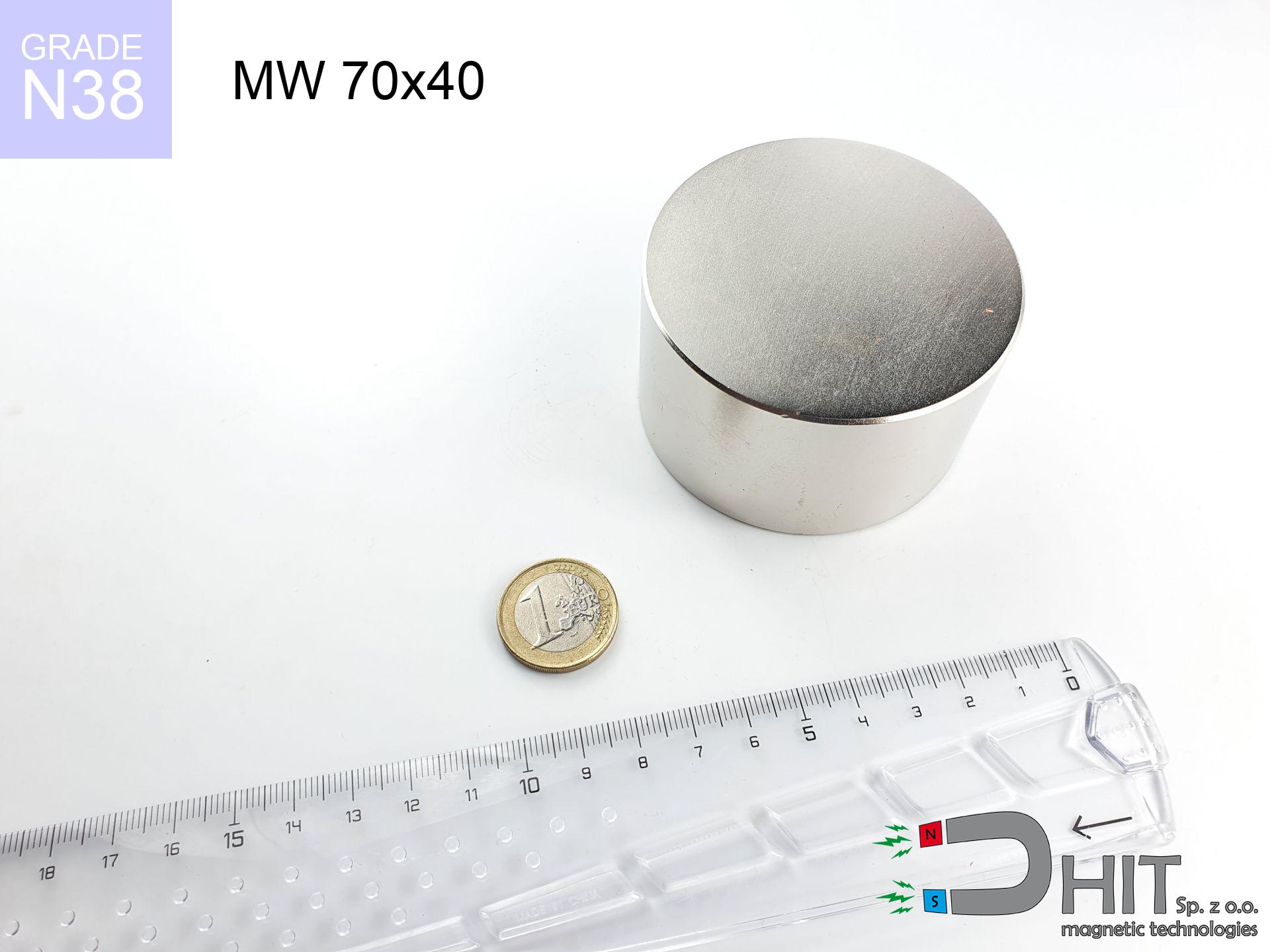MP 5x1.5x3 / N38 - ring magnet
ring magnet
Catalog no 030451
GTIN: 5906301812357
Diameter [±0,1 mm]
5 mm
internal diameter Ø [±0,1 mm]
1.5 mm
Height [±0,1 mm]
3 mm
Weight
2.47 g
Magnetization Direction
↑ axial
Load capacity
0.56 kg / 5.49 N
Magnetic Induction
121.27 mT
Coating
[NiCuNi] nickel
0.344 ZŁ with VAT / pcs + price for transport
0.280 ZŁ net + 23% VAT / pcs
bulk discounts:
Need more?Not sure which magnet to buy?
Call us now
+48 22 499 98 98
alternatively contact us via
form
our website.
Strength along with appearance of magnetic components can be calculated with our
force calculator.
Same-day shipping for orders placed before 14:00.
Magnetic properties of material N38
Physical properties of sintered neodymium magnets Nd2Fe14B at 20°C
Shopping tips
Pros as well as cons of neodymium magnets.
Besides their durability, neodymium magnets are valued for these benefits:
- They virtually do not lose strength, because even after 10 years the decline in efficiency is only ~1% (according to literature),
- Neodymium magnets are extremely resistant to magnetic field loss caused by magnetic disturbances,
- In other words, due to the reflective surface of nickel, the element becomes visually attractive,
- Magnets possess extremely high magnetic induction on the surface,
- Due to their durability and thermal resistance, neodymium magnets can operate (depending on the shape) even at high temperatures reaching 230°C or more...
- In view of the ability of free molding and customization to specialized needs, NdFeB magnets can be created in a broad palette of geometric configurations, which expands the range of possible applications,
- Huge importance in advanced technology sectors – they find application in HDD drives, electromotive mechanisms, advanced medical instruments, also technologically advanced constructions.
- Thanks to concentrated force, small magnets offer high operating force, occupying minimum space,
Disadvantages of NdFeB magnets:
- At strong impacts they can break, therefore we advise placing them in steel cases. A metal housing provides additional protection against damage, as well as increases the magnet's durability.
- Neodymium magnets lose their force under the influence of heating. As soon as 80°C is exceeded, many of them start losing their power. Therefore, we recommend our special magnets marked [AH], which maintain stability even at temperatures up to 230°C
- Magnets exposed to a humid environment can rust. Therefore while using outdoors, we suggest using waterproof magnets made of rubber, plastic or other material protecting against moisture
- Due to limitations in producing threads and complicated shapes in magnets, we propose using cover - magnetic mechanism.
- Potential hazard resulting from small fragments of magnets are risky, when accidentally swallowed, which becomes key in the context of child safety. Additionally, tiny parts of these devices can complicate diagnosis medical after entering the body.
- High unit price – neodymium magnets cost more than other types of magnets (e.g. ferrite), which can limit application in large quantities
Optimal lifting capacity of a neodymium magnet – what contributes to it?
The load parameter shown represents the maximum value, obtained under optimal environment, specifically:
- using a base made of low-carbon steel, functioning as a circuit closing element
- with a thickness minimum 10 mm
- with an ground touching surface
- with zero gap (no impurities)
- for force acting at a right angle (in the magnet axis)
- at room temperature
What influences lifting capacity in practice
In real-world applications, the real power depends on a number of factors, ranked from the most important:
- Distance – the presence of any layer (paint, tape, gap) acts as an insulator, which reduces power rapidly (even by 50% at 0.5 mm).
- Load vector – highest force is obtained only during pulling at a 90° angle. The resistance to sliding of the magnet along the surface is typically several times lower (approx. 1/5 of the lifting capacity).
- Metal thickness – thin material does not allow full use of the magnet. Magnetic flux passes through the material instead of converting into lifting capacity.
- Material type – the best choice is pure iron steel. Stainless steels may have worse magnetic properties.
- Base smoothness – the more even the surface, the larger the contact zone and higher the lifting capacity. Roughness creates an air distance.
- Thermal conditions – NdFeB sinters have a negative temperature coefficient. At higher temperatures they are weaker, and at low temperatures they can be stronger (up to a certain limit).
* Holding force was measured on a smooth steel plate of 20 mm thickness, when a perpendicular force was applied, whereas under shearing force the lifting capacity is smaller. In addition, even a small distance {between} the magnet’s surface and the plate lowers the lifting capacity.
Safe handling of NdFeB magnets
Protect data
Device Safety: Strong magnets can ruin payment cards and delicate electronics (heart implants, hearing aids, timepieces).
Material brittleness
Protect your eyes. Magnets can explode upon violent connection, launching shards into the air. Eye protection is mandatory.
Medical implants
Individuals with a ICD have to keep an safe separation from magnets. The magnetism can interfere with the operation of the life-saving device.
Machining danger
Fire hazard: Neodymium dust is highly flammable. Do not process magnets without safety gear as this risks ignition.
Caution required
Be careful. Rare earth magnets act from a long distance and snap with massive power, often faster than you can react.
Bodily injuries
Protect your hands. Two large magnets will snap together immediately with a force of massive weight, crushing everything in their path. Exercise extreme caution!
Operating temperature
Regular neodymium magnets (grade N) lose power when the temperature goes above 80°C. Damage is permanent.
Keep away from children
Neodymium magnets are not intended for children. Swallowing several magnets may result in them pinching intestinal walls, which constitutes a direct threat to life and necessitates urgent medical intervention.
Phone sensors
An intense magnetic field negatively affects the operation of compasses in phones and GPS navigation. Keep magnets close to a smartphone to avoid damaging the sensors.
Skin irritation risks
A percentage of the population experience a hypersensitivity to nickel, which is the standard coating for NdFeB magnets. Frequent touching might lead to skin redness. It is best to use protective gloves.
Important!
Learn more about risks in the article: Safety of working with magnets.






![SM 25x375 [2xM8] / N42 - magnetic separator SM 25x375 [2xM8] / N42 - magnetic separator](https://cdn3.dhit.pl/graphics/products/sm-25x375-2xm8-feg.jpg)

